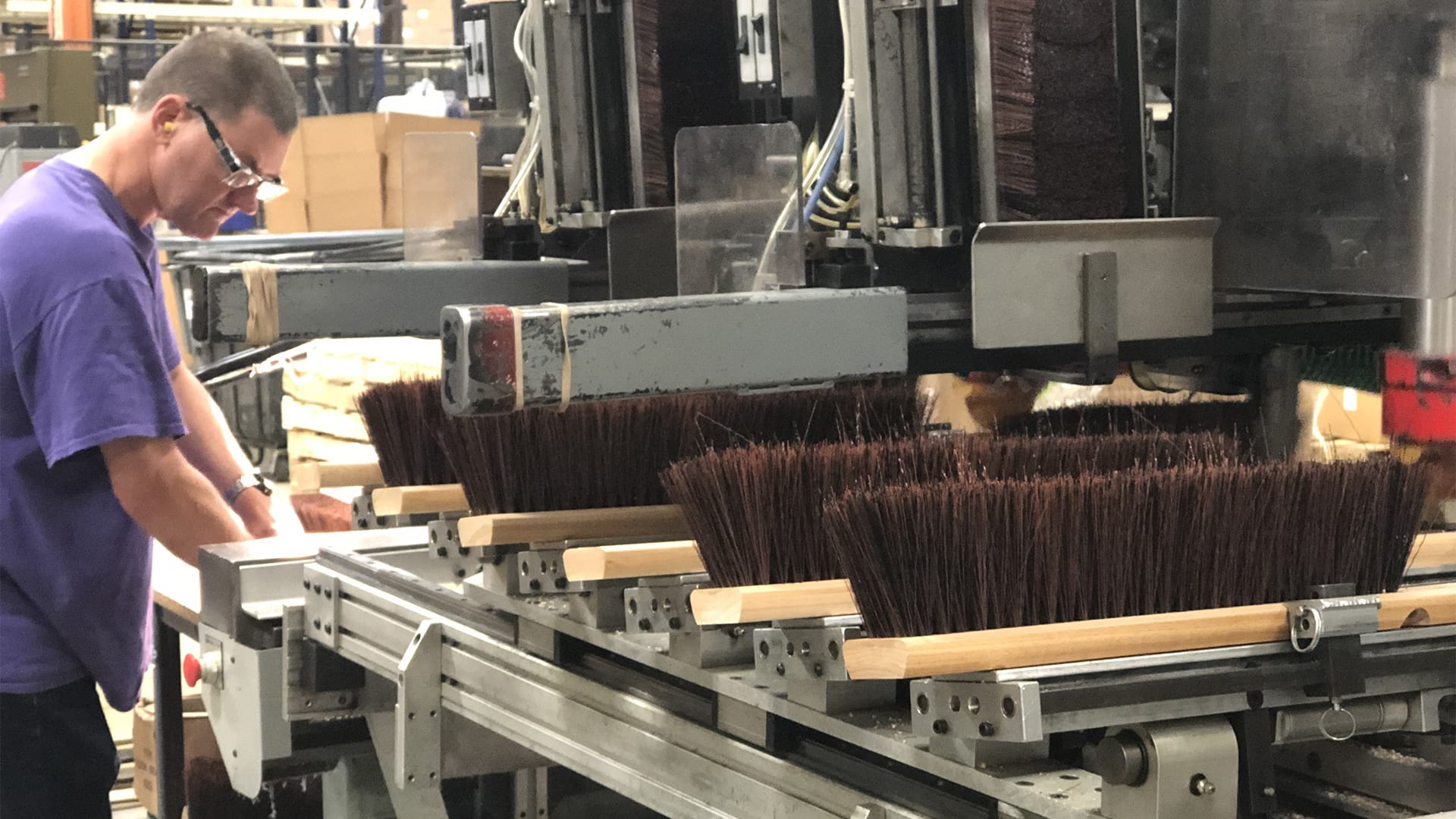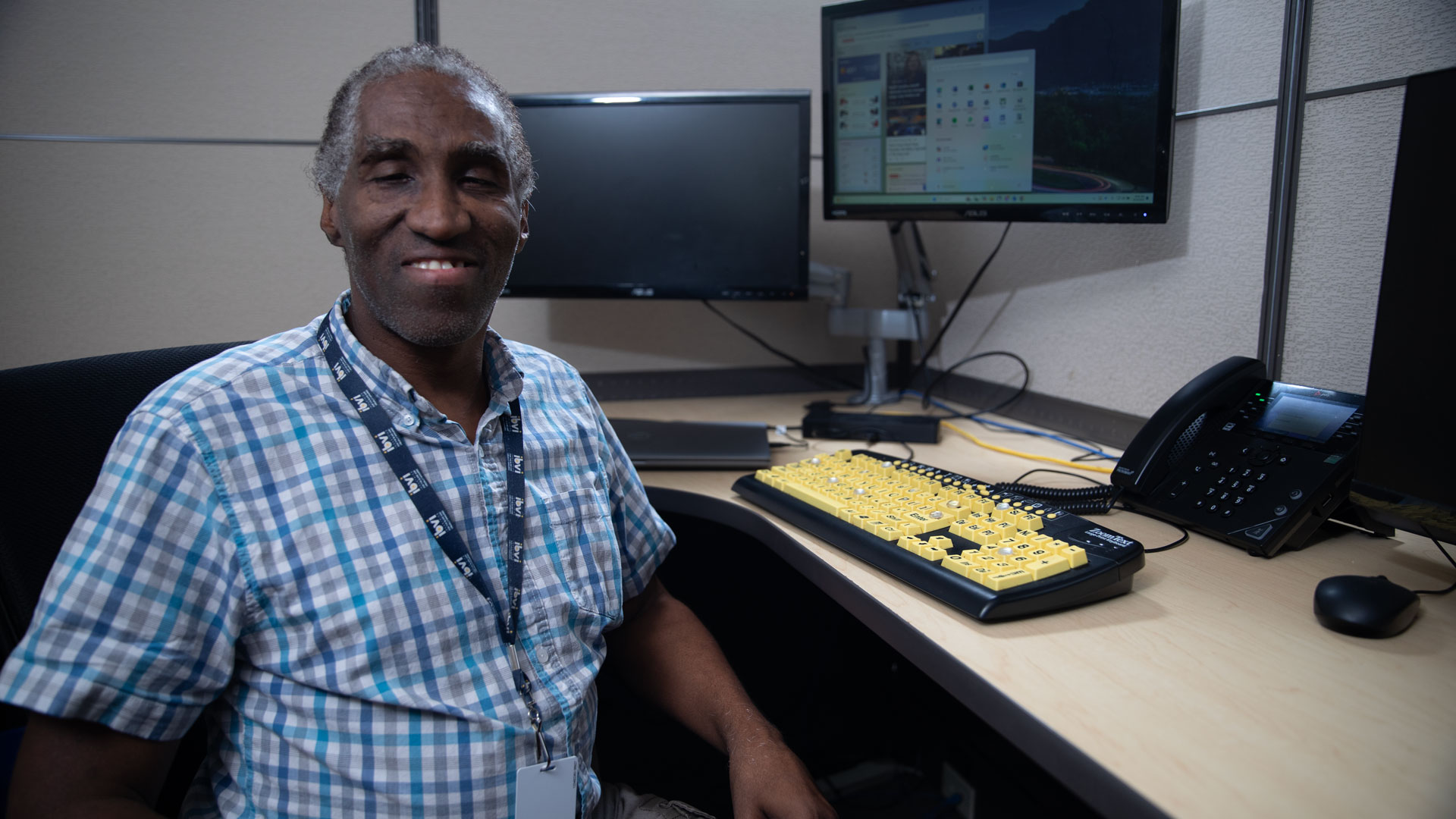How Employee Engagement Cultivates a Safe and Accessible Workplace
June is National Safety Month a time set aside to raise awareness about safety practices and injury prevention. For an inside look at our safety procedures, we sat down with IBVI’s Facilities Administrator, Chris Willis, and Stephen George, Maintenance and Facilities Manager at IBVI, to talk about all things safety. While standard safety procedures apply, there are some “safety specifics” that are unique to IBVI. Let’s talk about how our employee-driven approach to safety can provide some key takeaways for companies looking to learn more about accessibility in the workplace.
What are the overall safety protocols at IBVI?
[CW]: Safety guards are installed on machines to protect workers from moving parts, sharp edges, and other hazards, and workers are not to bypass or remove them.
Clothing here is not restricted—employees can wear pretty much anything they usually would wear outside of the job. Most positions allow for regular attire like t-shirts and jeans, though operators dealing with heavy packages often wear steel-toed boots. Safety glasses and hearing protection are provided, with options like earplugs or ear muffs available for loud machinery.
Our floor layout uses a grid system with distinct sections placed for specific jobs like brush and broom assembly or hand assembly for tools and pens. We have an open layout, avoiding narrow aisles or walkways. We found this works best for our employees, making sure our spaces are easy to navigate within the general shop floor and each employee’s respective sections.
What all goes into the development of IBVI’s safety measures?
[CW]: We have several committees (Safety Committee and Innovation Committee) that address topics like safety inside and outside of the building. Committees have regular meetings with management and employees to ensure a holistic approach when addressing any problems or challenges that may arise.
These meetings are a time to share our thoughts about any suggested solutions. If everyone likes a proposal, it’s then a matter of implementing the idea in an economical way. It boosts morale when decisions are employee-driven. It’s a collaborative process where everyone gets involved and is part of the discussion.
Can you tell us more about how employees participate in the decision-making process?
[SG]: Our decisions are employee-driven. We want to know what works best for them, or what doesn’t work for them. Employees have the final say if we’re to find a solution that truly works. What might work for one person may not work for another, so it’s important that we open the discussion to give everyone space to have a voice.
[CW]: From the moment an employee joins our team, they learn that safety is a top priority for us. The entire orientation process is personalized, so if someone feels uneasy about their job, we listen closely and discuss options together. This could mean rearranging stations for better flow or improving lighting for those with low vision. Ultimately, we’re all about empowering our employees to drive solutions that will make their jobs safer and more efficient.
For example, we recently ran an experiment with our floor layout and general travel around the plant. Numerous employees had expressed difficulties getting around the floor to the restrooms or break rooms, or to offices and back. Initially, we got some non-slip, textured tape to line the floor—kind of like train tracks. We put two stripes down our aisles in different directions for employees to go by. They got the feel for it and the feedback was positive, however, because it was temporary—and because of forklift traffic and pallet jacks—the tape was pulling up and wearing away. But, the experiment gave us the information we needed. We realized something we could provide that would help our employees.
The end result led to us contracting with a company that could put down an epoxy coating on the floors that contained sand, as this could take the place of the tape and provide something much more durable. It would feel the same way and help employees navigate the floors easier without someone leading them or a guide dog, for instance. It was a step that gave our employees more independence, and that’s what we’re all about.
Specific to people who are blind or visually impaired, are there unique safety considerations?
[CW]: In our building, we use a combination of materials on our floors and carpets to show where pathways are and where to turn. We also apply friction tape on doors and grips to indicate whether doors swing in or out. We recently had some issues with employees navigating through our double doors, as it was difficult to tell which door swings which way. To address this, we’ve explored a few ways to make it easier for employees to move around the building, such as improving textures on door handles or providing visual cues.
[SG]: We also upgraded our brush equipment and machinery to be easier and safer to use. The upgrades now open up these jobs to those who were not able to do them before. This was an investment we made to keep in line with our policy of upward mobility for all.
What do you think other companies could learn about IBVI’s safety plan? What does IBVI do best?
[CW]: A lot of companies have certain restrictions in place that limit who can do certain jobs or work in certain areas. At IBVI, we prioritize inclusivity by ensuring that every department is accessible to every employee. For instance, my wife, who is visually impaired and works at IBVI, has found opportunities across several departments during her time here. Despite starting with minimal experience, the company provided training and hands-on experience, allowing her to explore different roles and determine the best fit for her skills and interests.
We have another employee here, Joe, who is completely blind, yet he works on the hand assembly team. He is very good at his job and does excellent work. A few years ago, I had initial doubts about how he would do, mainly because someone with vision filled the role before him. But he took to it, and he’s awesome at it. We wouldn’t have known that if we hadn’t given him a chance to see what he could do.
[SG]: There are so many stories like that here. And sometimes people try a few different positions and they don’t work out. But then one does, and they find what they love. That’s our passion here. We provide the opportunity, and we give people the opportunity to succeed. When they do, it’s a great feeling seeing them rise above expectations and proving to themselves that they can do it.
What part of your role makes you the most proud to work for IBVI?
[SG]: I like seeing upward mobility. It is a joy to watch people move up and do different jobs. As a manager, you like to see as many people cross-trained as possible. Doing the same thing every day gets boring. But here, people get to move around and do different jobs. Having different tasks stretches you and makes you a better—and happier—employee. It’s not easy, and at times it’s a slow process, but I think we’re getting better at it.
[CW]:I feel the same way. My wife and many of her family members are visually impaired. I’ve heard stories from their childhoods where they were told, ‘You don’t see very well, so just sit quietly in the corner. You can’t do what the other kids are doing. You can’t run around and play with them because you’re blind or have poor vision.’ These stories are very personal to them. I’ve heard similar experiences from employees here. It’s heartening to see that there’s a place where they can come and operate machinery, work to their strengths, excel in IT, accounting, customer service, or anything else that interests them. They’re given a fair chance to pursue their passions here at IBVI.”
[SG]: Sometimes we look at things initially and say “Well, they probably can’t do that. But, the more we think about things and the more we learn, we start to say “Maybe we can. Let’s try it and see where this goes.”
That’s the challenge. We often ask, “How can we make this machine work better or make our job functions more accessible for our employees?” We’re constantly changing our setups to make things easier to operate or function better. It’s hard work but it’s worth it. Because in the end, our people drive the ideas, they drive the success, and they drive the results.


